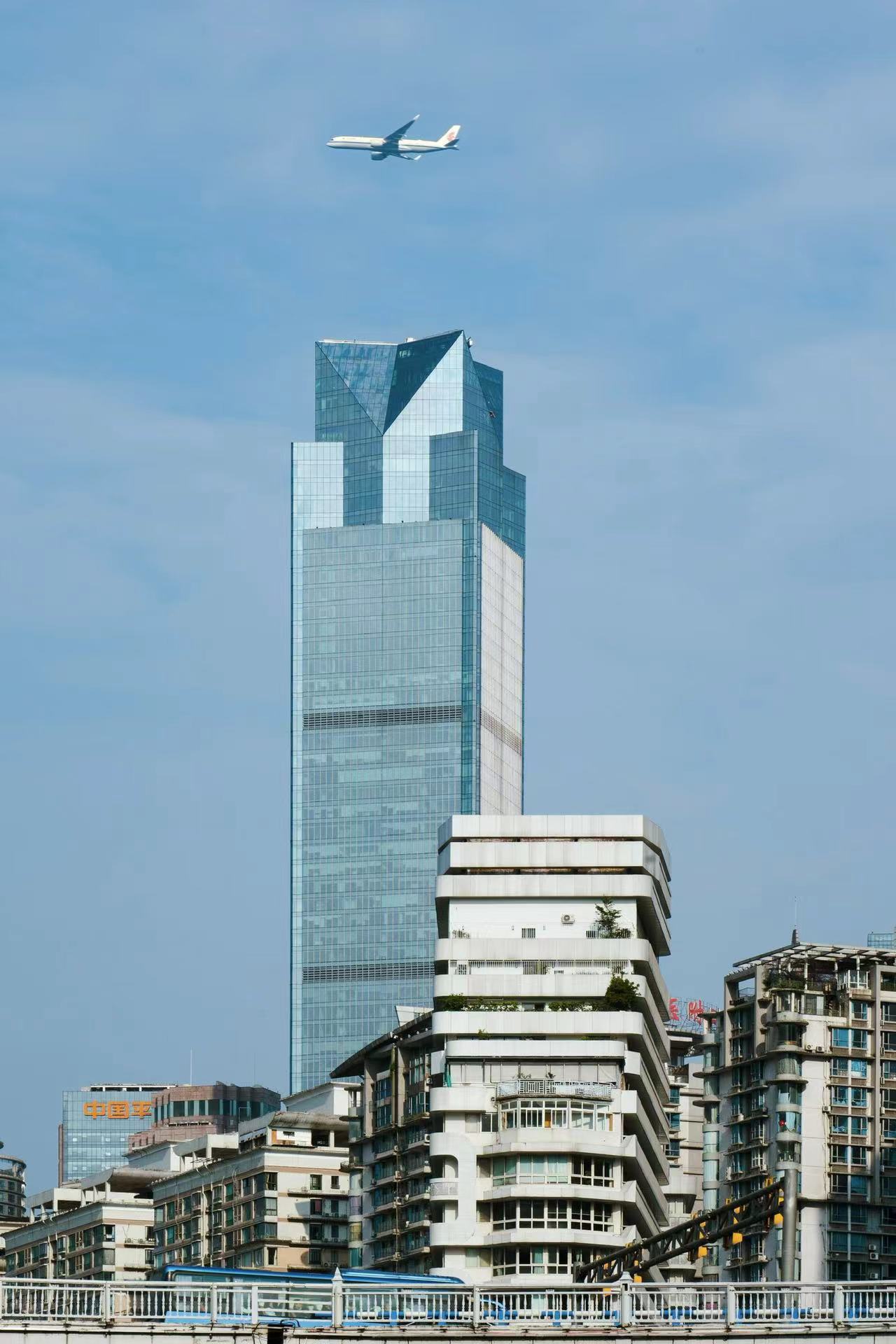
高聳的寫字樓與老舊居民區相融,飛機與公交車相應凸顯多元融合的山城魅力。
The towering buildings blend with the old residential areas, while planes and buses highlight the Chongqing with its diversity.
山川秀美,人文霧都。從古代的巴國故都到今日的現代化大都市,重慶的變遷見證了中國式現代化和國民經濟的高速攀升。本組照片以重慶的城市化建設為出發點,從交通、生活、旅遊等多個方面綜合展示重慶城市風貌。並以作者本人的視角,看重慶的現代化發展歷程,以及中國現代化在直轄市重慶的具象化體現。
憶往昔,重慶是巴國的政治、經濟、文化和軍事中心,有著悠久的歷史和豐富的文化遺産。清朝時期,重慶就已成為內陸重要的水陸交通樞紐,其獨特的地理位置使得重慶在與其他城市的貿易往來中佔據優勢,促進了經濟的初步發展;共和國成立初期,重慶被確定為國家重要的工業基地,逐漸成為西南地區的經濟中心;改革開放後,重慶成為中國第四個直轄市,這標誌著重慶在全國政治和經濟格局中的地位進一步提升。與其他城市相比,直轄市的地位為重慶提2供了更多的政策支援和自主權,促進了其經濟的快速發展。
時光荏苒,隨著中國的現代化進程,重慶也迎來了翻天覆地的變化。改革開放以來,重慶的經濟發展日新月異。高樓大廈如雨後春筍般拔地而起,與古老的建築交相輝映,形成了獨特的城市風貌。重慶通過創新科技應用、産業轉型升級、文旅交替融合、綠色生態發展、開放合作共贏五位一體協同共驅,竭力打造現代化都市。如今便捷的交通網路、多元的商業中心、豐富的文化活動,讓重慶煥發出新的生機與活力。作為中西部地區首個 GDP突破 3萬億元的城市,重慶西部陸海新通道建設、發展新質生産力、成渝地區雙城經濟圈建設等主題成為熱點話題。
重慶的勞動人民是這座城市發展的中堅力量。他們的智慧與勤勞,不僅塑造了這座城市的獨特魅力,更在非物質文化遺産的傳承中留下了濃墨重彩的一筆。川劇,這一集唱、做、念、打于一體的綜合性表演藝術,正是重慶人民精神風貌的生動展現;榮昌陶器,則是重慶人民對泥土的尊重與利用的結晶,每一件作品都承載著匠人的心血與智慧,體現出他們獨特的審美與創造力;潼南竹編,更是一種對生活的熱愛與追求,勞動人民以竹為材,編織出精美的生活用品,不僅實用,更是藝術的體現。這些非遺文化,是重慶勞動人民智慧的結晶,也是他們勤勞與創造的見證,它們共同構成了重慶獨特的文化風貌。
在第三産業方面,重慶多措並舉,依託山城獨特的地理位置與直轄市相關權益,通過推動智慧文旅進程、打造特色文旅項目、促進文旅深度融合,各業態整體呈現良性發展趨勢。重慶的美食、美景、民俗文化等吸引了無數遊客前來體驗遊玩——火鍋、小面、串串香等重慶特色美食更是成為了遊客們爭相品嘗的美味佳肴。此外,重慶還推出了各類旅遊活動和節慶展會,如長江三峽遊、武隆天生三橋等,讓遊客們能夠更深入地了解這座城市的文化和歷史。
如今,重慶已經崛起為一座現代化大都市,成為成渝雙環經濟區的中心城市。它既有古老的文化底蘊,又有現代化的城市風貌;既有勤勞智慧的勞動人民,又有豐富多彩的文旅資源。重慶的變遷,不僅是中國式現代化和經濟發展的縮影,更是中國人民勤勞、智慧、勇敢的具象化呈現。在這座城市裏,我們可以看到中國未來的無限可能與希望!
The Dramatic Change of Chongqing: The Rise of the Mountain City in the Process of ModernizationWith its beautiful mountains and rivers, Chongqing, the misty city of culture, has transformed from an ancient capital of the Ba Kingdom to a modern metropolis today. This transformation is a testament to the rapid climb of China-style modernization and the national economy. This series of photos takes Chongqing’s urbanization as a starting point, comprehensively showcasing the city’s urban landscape from various aspects such as transportation, lifestyle, and tourism. Through the author’s perspective, we see Chongqing’s journey of modernization and the embodiment of China-stylemodernization in this municipality directly under the central government.
In the past, Chongqing was the political, economic, cultural, and military center of the Ba Kingdom, boasting a long history and rich cultural heritage. During the Qing Dynasty, Chongqing emerged as an important inland transportation hub for both land and water, with its unique geographical location conferring advantages in trade with other cities and fostering initial economic growth. Early after the founding of the 5People’s Republic of China, Chongqing was designated as an important industrial base of the country, gradually evolving into the economic hub of southwestern China. Following the reform and opening up, Chongqing became China’s fourth municipality directly under the central government, marking a further elevation of its status in the national political and economic landscape. Compared to other cities, the status of a municipality provided Chongqing with more policy support and autonomy, fueling its rapid economic growth.
As time passes, Chongqing has undergone earth-shaking changes along with China’s modernization process. Since the reform and opening up, Chongqing’s economy has been developing rapidly. Skyscrapers have sprung up like bamboo shoots after a rain, intertwining with ancient architecture to form a unique urban landscape. Through a holistic approach encompassing innovative technology applications, industrial transformation and upgrading, alternating integration of culture and tourism, green ecological development, and open and win-win cooperation, Chongqing strives to forge a modern metropolis. Nowadays, with a convenient transportation network, 6diverse commercial centers, and rich cultural activities, Chongqing radiates new vitality and dynamism. As the first city in the central and western regions to have its GDP exceed 3 trillion yuan, Chongqing has become a hotspot for topics such as the construction of the New Western Land-Sea Corridor, the development of new productive forces, and the establishment of the Chengdu-Chongqing Economic Circle.
The working people of Chongqing are the backbone of the city’s development. Their wisdom and diligence have not only shaped the unique charm of the city but also left an indelible mark in the inheritance of non-material cultural heritage. Sichuan Opera, a comprehensive performing art integrating singing, acting, speaking, and martial arts, vividly demonstrates the spiritual outlook of Chongqing people. Rongchang pottery, a crystallization of Chongqing people’s respect and utilization of clay, embodies the craftsmanship, wisdom, unique aesthetics, and creativity of each artisan through their works. Tongnan bamboo weaving, a manifestation of love and pursuit of life, sees laboring people weave exquisite daily necessities from bamboo, which are not only practical but also artistic expressions. These non-material cultural heritages are the 7crystallization of Chongqing working people’s wisdom, as well as testimonies to their diligence and creativity, jointly constituting the unique cultural landscape of Chongqing.
In the tertiary industry, Chongqing has adopted multiple measures, leveraging the unique geographical location of the mountain city and the relevant rights and interests of a municipality directly under the central government. By promoting the process of smart cultural tourism, creating distinctive cultural tourism projects, and fostering deep integration of culture and tourism, various industries have exhibited a positive development trend overall. Chongqing’s delicious food, scenic spots, and folk culture have attracted countless tourists to experience and explore. Chongqing-style hotpot, small noodles, and fried sticked meat (a type of skewered snack) have become must-try delicacies for tourists. Additionally, Chongqing has launched various tourism activities and festivals, such as the Three Gorges cruise and the Wulong Natural Bridges, allowing tourists to delve deeper into the city’s culture and history.
Today, Chongqing has emerged as a modern metropolis and a central city in the Chengdu-Chongqing Economic Circle. It boasts both ancient cultural roots and a 89modern urban landscape, along with diligent and wise working people and a rich array of cultural and tourism resources. Chongqing’s transformation is not only a microcosm of China-style modernization and economic development but also a vivid representation of the Chinese people’s diligence, wisdom, and courage. In this city, we can glimpse the boundless possibilities and hopes for China’s future!
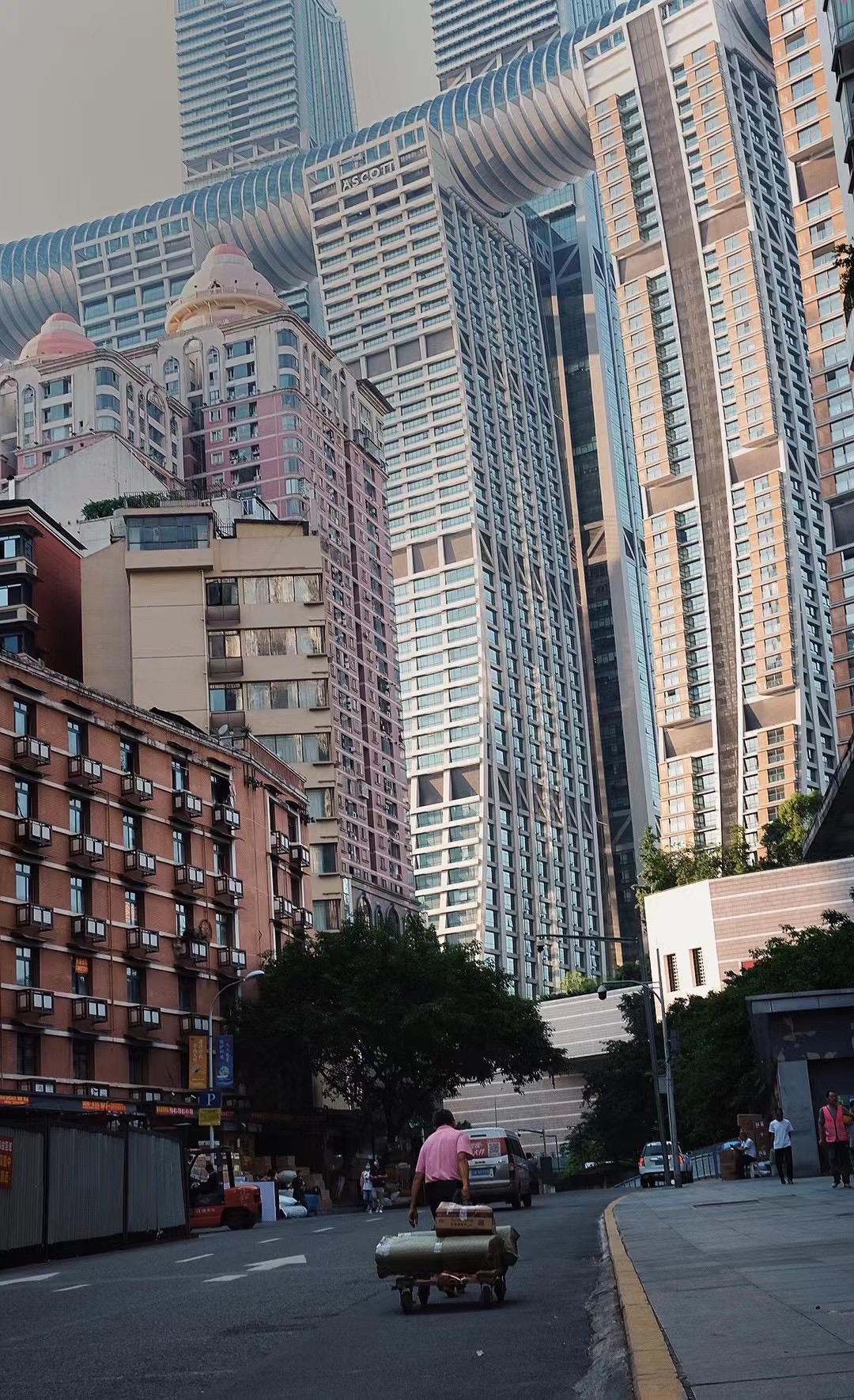
傾斜的來福士下霧都人民安居樂業,展現出生活妙趣。
As the tilting Laifushi Building stands below, the people of the Foggy City live and work in peace and contentment, exhibiting the charm of daily life.
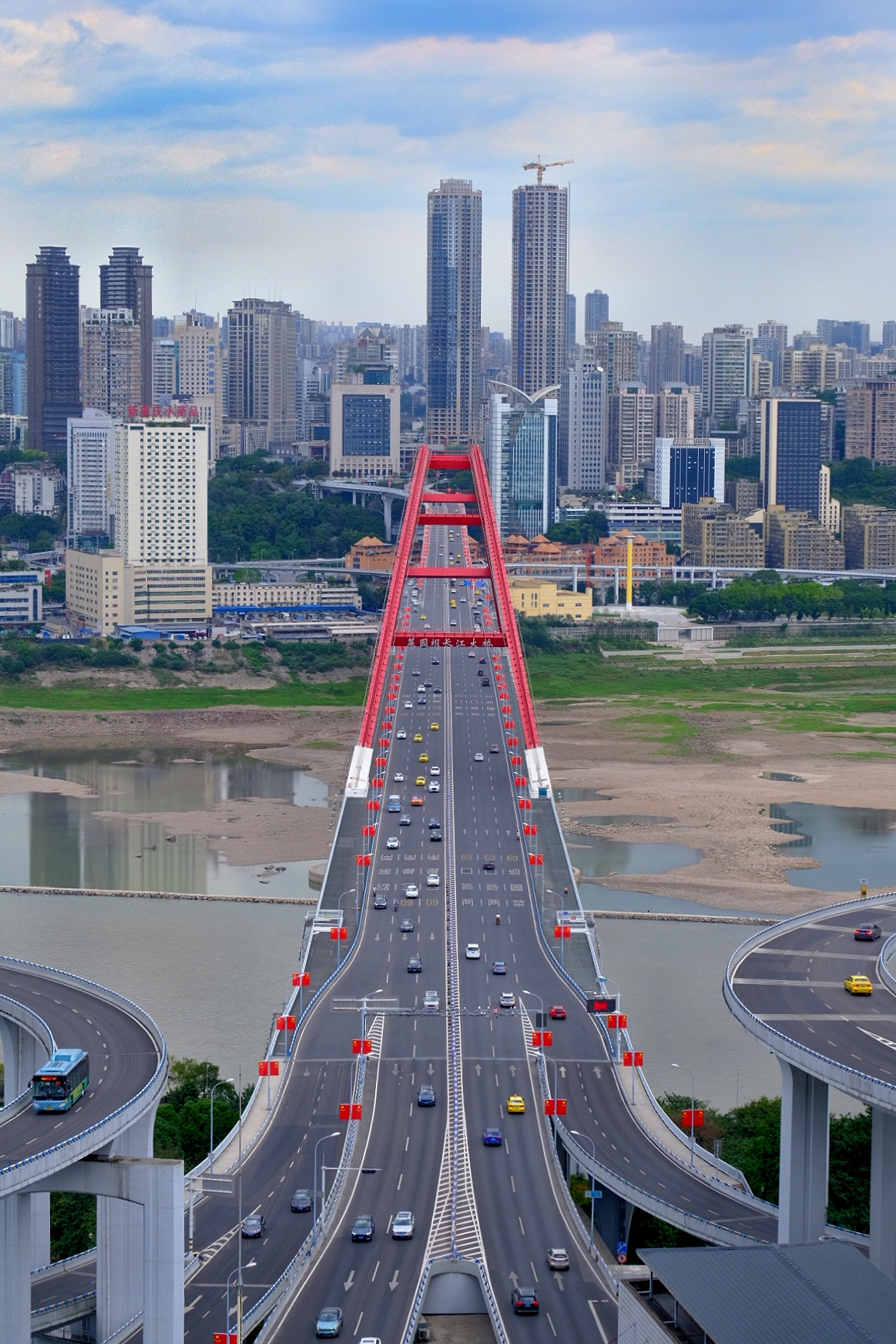
巨大的高架橋橫空而起,構建人們生活的交通樞紐。
Massive viaducts soar into the sky, serving as the transportation hub of people’s lives.
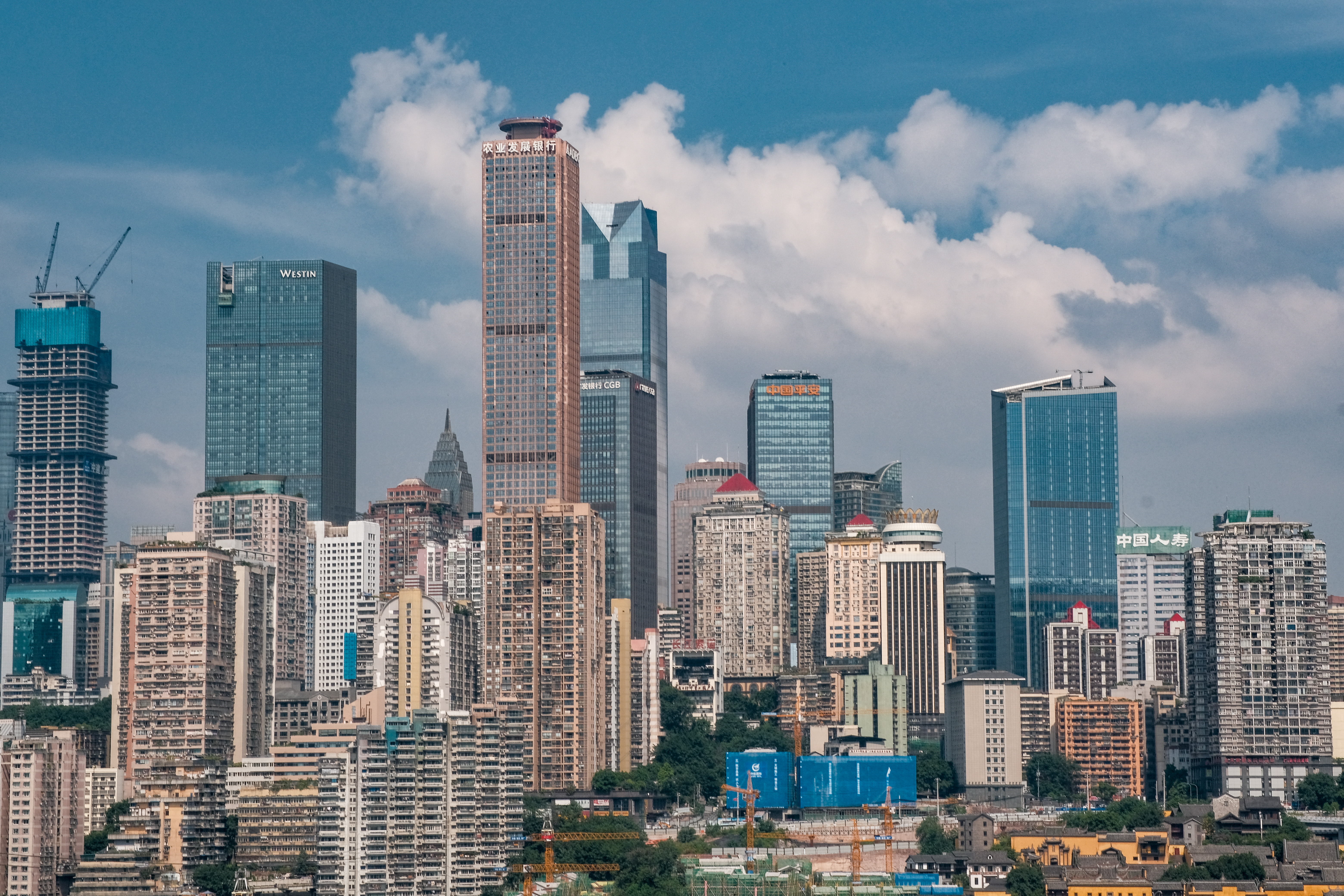
藍天映襯白雲,迎面望穿,樓房縱橫交錯、錯落有致。
Against the backdrop of the azure sky, the white clouds float gracefully. Looking ahead, the buildings are crisscrossed and arranged in an orderly yet charming fashion.
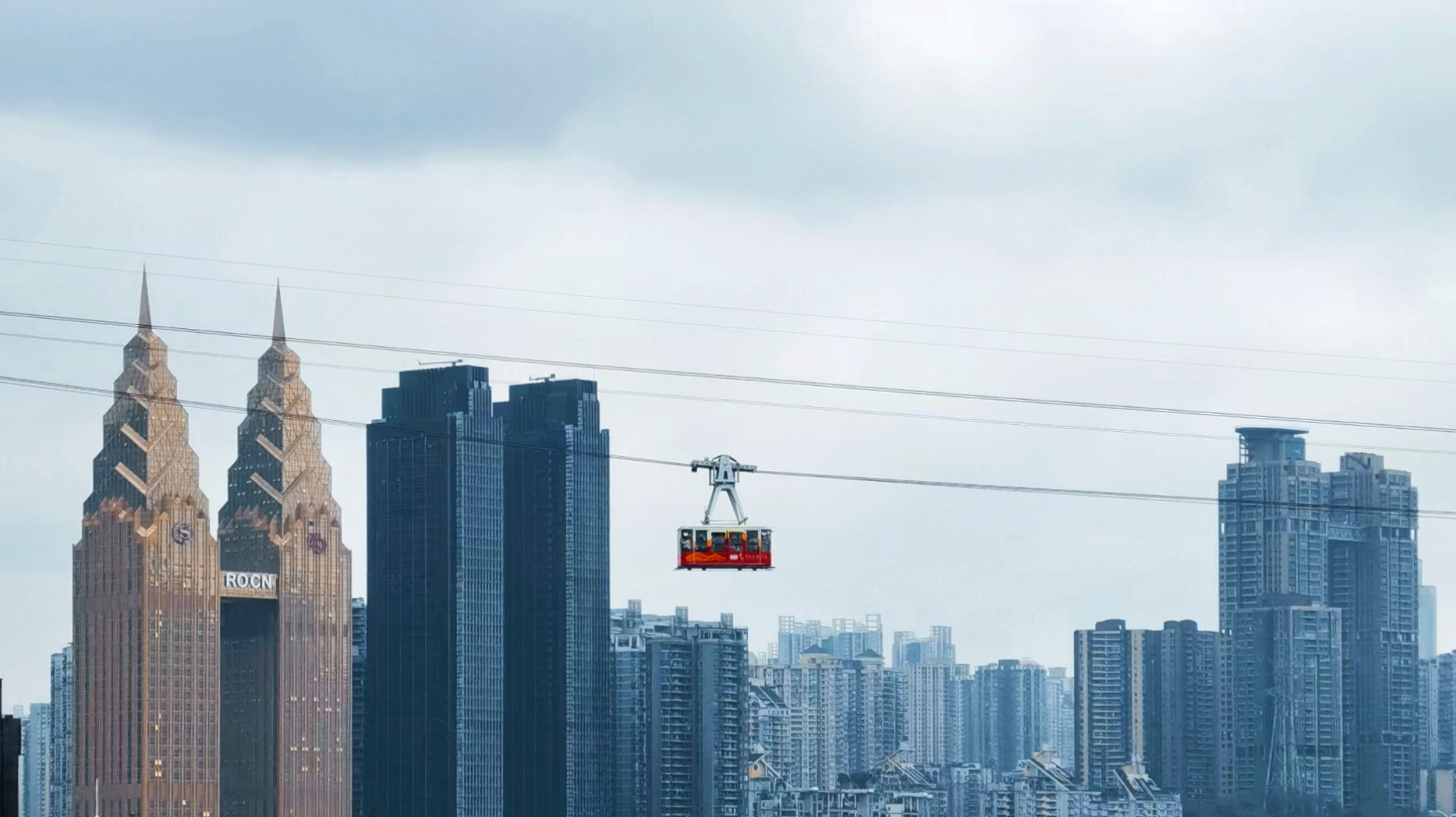
索道穿城過,雙子塔映江天,旅遊興經濟旺。
The cableway passes through the city, the twin towers reflect the sky, and tourism promotes economic prosperity.